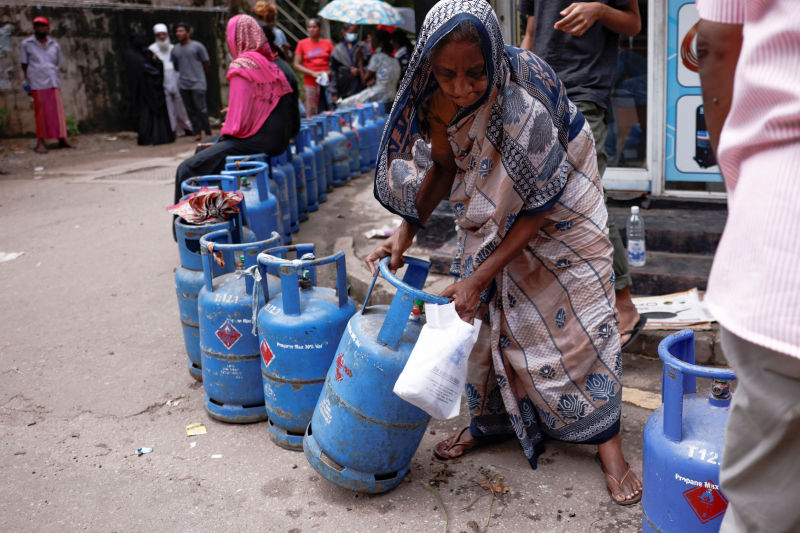China is the world’s biggest bilateral creditor, but Beijing has kept a low profile as many developing economies struggle for debt relief after the Covid pandemic.
Analysts say pressure is rising on China to take a more active role in helping strained economies ease their debt crises.
The world’s second-largest economy is a dominant lender to many smaller, riskier developing nations such as Sri Lanka, Zambia, Laos and others that are enduring severe social strain because of economic slowdowns.
But Beijing has kept its cards close to its chest, not only on lending conditions but also on how it renegotiates with borrowers in distress.
From a $360 million project to expand Zambia’s international airport in Lusaka to a $1.4 billion city port in Sri Lanka’s capital of Colombo, China is the missing piece in the puzzle of a number of debt talks underway in developing markets.
Now, the pressure is rising on China to take a more active role in helping strained economies overhaul their debt burdens. Leaders of the Group of Seven rich democracies called last week on China specifically when urging creditors to help countries.
The world’s poorest countries face $35 billion in debt-service payments to official and private sector creditors in 2022, with over 40% of the total due to China, according to the World Bank.
But analysts say the International Monetary Fund (IMF) and World Bank premise of fair burden-sharing in debt relief talks could set them on a collision course with China, putting the prospect of comprehensive debt restructurings into question.
ALSO SEE: How Sri Lanka Spiralled Into Crisis And Who is Helping Them
“Chinese ‘Belt and Road’ money is everywhere – so we will see this over and over in sovereign debt restructurings,” said Dennis Hranitzky, head of sovereign litigation at law firm Quinn Emanuel.
According to Beijing, the Belt and Road Initiative unveiled in 2013 is a platform for international cooperation in infrastructure, trade, investment and financing linking China with other parts of Asia, the Middle East, Europe and Africa.
Sri Lanka and Zambia are test cases on how fast debt talks evolve. Both also need to restructure with overseas bondholders and hammer out IMF programmes.
“China’s engagement on debt talks is not in the hands of the IMF nor governments,” said Polina Kurdyavko, head of emerging markets at BlueBay Asset Management in London.
“Bringing China to the negotiating table in a timely manner could be the biggest challenge in the upcoming debt restructurings.”
China’s foreign ministry and central bank did not respond to requests for comment.
Opaque, Secretive Lending
Chinese lending is mostly extended by state-controlled agencies and policy banks and is often opaque.
A working paper of the National Bureau of Economic Research in the United States found half of the 5,000 loans and grants extended to 152 countries from 1949 to 2017 have not been reported to the IMF or the World Bank, despite China being a member of both multilaterals.
“Opacity is a recurrent problem with some of these Chinese loans,” said Matthew Mingey, senior analyst with Rhodium Group, adding China had stricter confidentiality clauses on its commercial loans.
Data compiled over three years by AidData, a US research lab at the College of William & Mary, found terms of Chinese state-owned banks’ loans require borrowers to prioritise them for repayment.
Examinations of 100 Chinese loans with 24 low- and middle-income countries showed – when compared to those of other bilateral, multilateral and commercial creditors – demands for an unusual level of confidentiality, in some cases, “even the fact of the contract’s existence”, the study led by Georgetown Law professor Anna Gelpern found.
Where China has agreed to ease debt burdens, details are often unclear.
The plethora of Chinese lenders also adds to complexity, though Export-Import Bank of China and the China Development Bank feature most heavily.
“When it comes time to renegotiate, individual Chinese banks may not necessarily have an idea of what other Chinese banks are doing,” Mingey at Rhodium said.
Glacial Progress
Progress has often been slow.
Zambia is seeking relief on $17 billion of external debt after becoming the first Covid pandemic-era default more than two years ago. Some of the slow progress is due to China’s lack of experience with tricky debt restructurings, people familiar with the matter say.
Sri Lanka’s talks are moving faster, with the IMF confirming it is on track for a new programme. China’s approach, though, is not yet clear.
Meanwhile, some 60% of low-income countries are in, or at high risk of, debt distress, according to the IMF.
Some 17 smaller emerging economies have seen premium investors demand to hold their debt soar to levels effectively shutting them out of international markets. That number is higher than during peak-Covid or the 2008 global financial crisis.
In late 2020, the Group of 20 launched a Common Framework to bring creditors such as China and India to the negotiation table along with the IMF, Paris Club and private creditors. Along with Zambia, Chad and Ethiopia have applied to restructure under this new, yet-to-be tested mechanism.
But the framework also “has added a bureaucratic layer to the already complex debt restructuring process” that could discourage other countries from joining, Patrick Curran, senior economist at Tellimer, said.
- Reuters with additional editing by Jim Pollard
ALSO on AF:
Sri Lanka Counts on China Loan Amid IMF Talks – FT
IMF Official Sounds Warning on Risks to Asian Economies
Pakistan Seeks Urgent $6bn IMF Bailout as Economy Flounders
























